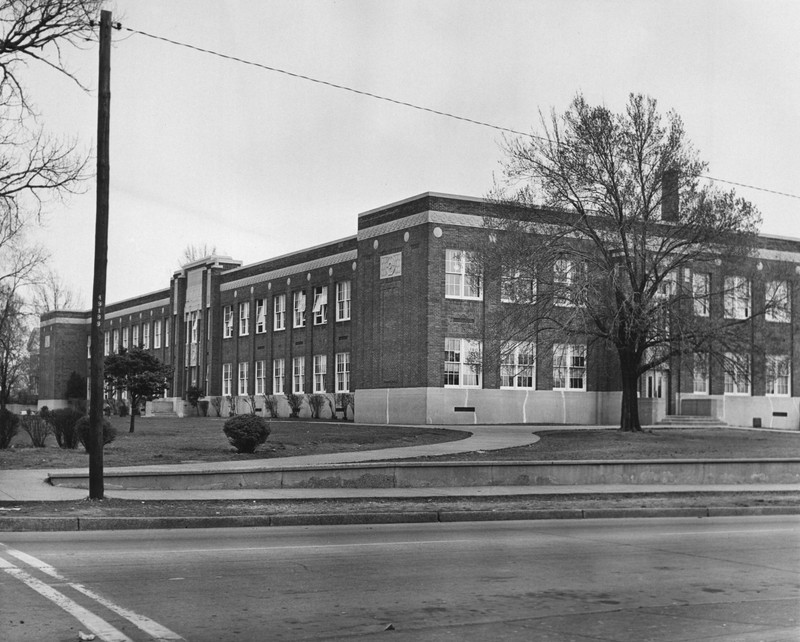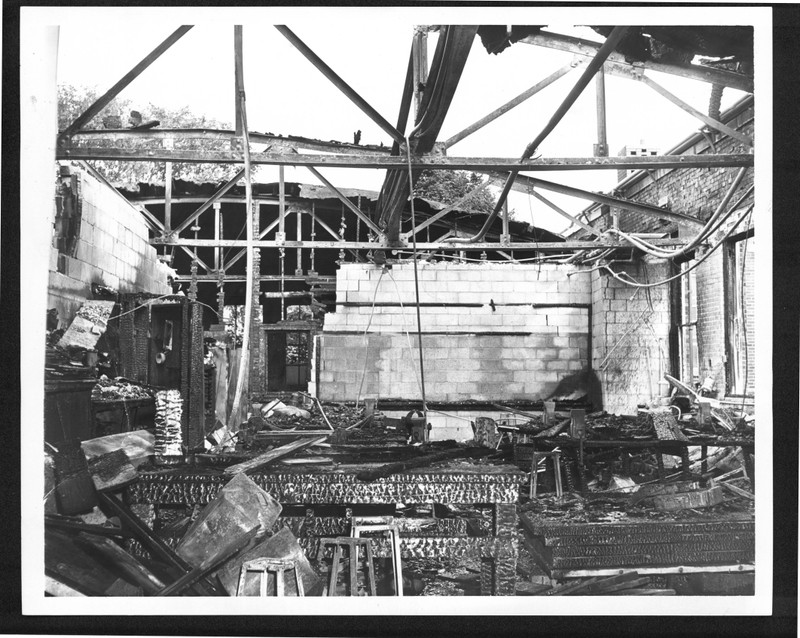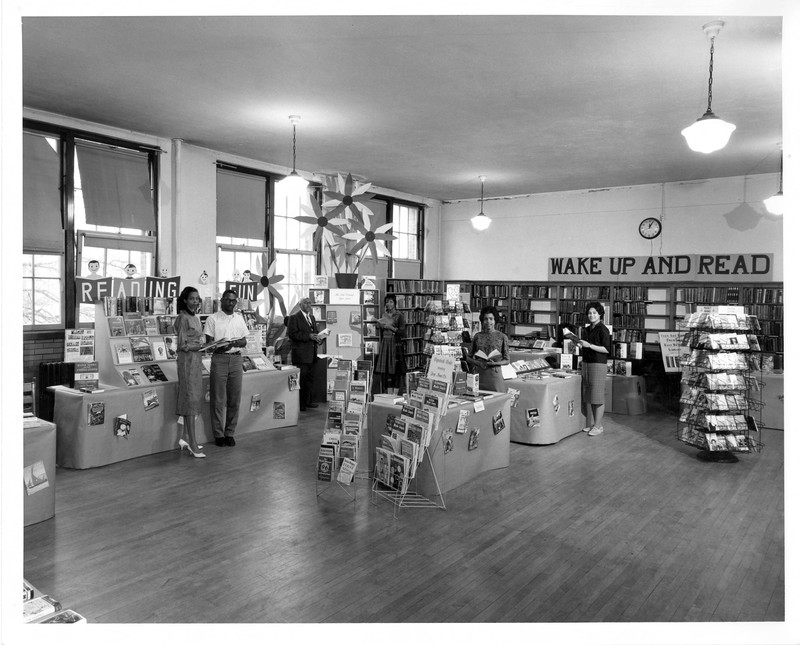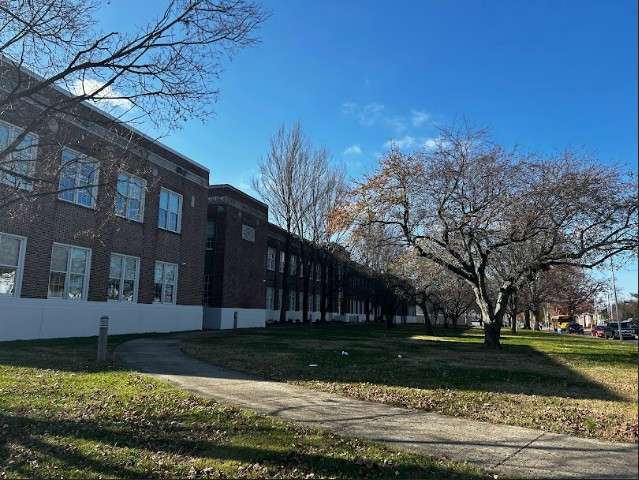Lincoln School
Introduction
Text-to-speech Audio
Lincoln High School was the first high school for the black community of Evansville built in 1928. The school still stands today with the name Lincoln School and serves as a Kindergarten through 8th grade school. The school was segregated until 1962 and then was converted into a K-8 school to begin the Evansville school corporation’s plans to integrate schools. The original history of the school is protected by the Alumni society as well as the Evansville African American Museum to help the Evansville community to continue to learn from its many years of racism and segregation.
Images
Photo of Lincoln High School taken in April of 1962. Following this school year, the school was converted into an elementary school and began its integration progress.

Image from Evansville Courier and Press on the fire that occurred in 1960. The image is of the shop room in the school.

Lincoln High School book fair in 1961.

Lincoln School as it looks today, November 14, 2023.

Backstory and Context
Text-to-speech Audio
Lincoln School was built in 1928 for the black community of Evansville, it was the first public schoolhouse built for this reason. It cost the community around $275,000 to build the schoolhouse. It had 22 classrooms, a gymnasium, auditorium, sewing room, home economics kitchen, study hall, and manual training center. However, there was not a cafeteria for the students and the library did not have any books. The school argued to provide books to the students, but the board of education refused to ensure this would happen. Therefore, the faculty took matters into their own hands. Mrs. Alberta K. McFarland, who was the first librarian at the school, went around the community and neighborhoods asking for books and donations.
The school was originally built as a Kindergarten through 12th grade school and had students from Mt. Vernon, Rockport, Newburgh, and Grandview as it was the only school for black students in the area. The enrollment was around 300 students, which of course was large for the time period.
In 1949, Indiana passed the law to begin desegregating schools in 1949. However, Lincoln was still an all-black school until 1962 and even then, it was a slow process that was not completed until 1972. According to an anonymous patron who attended this school during this time, they lived on the opposite side of town but were forced to bus to Lincoln everyday in order to encourage the desegregation of the school. Federal court judge, Judge Hugh S. Dillin made the decision to desegregate Evansville public schools in the 1960s,
The last all black high school class graduated in 1962 and the school changed to a Kindergarten through 8th grade school. In 1996 the school began following an all-year calendar. The students had intersession breaks in October, March, and June. Summer break was 6 instead of 9 weeks. However, they switched back to a traditional school system in 2013 to follow along with the rest of the Evansville Vanderburgh School Corporation.
Lincoln School holds a rich history of the segregation of the Evansville community. The school continues to preserve this history and as times have changed it has been brought more to light. To read more about the African American community and Lincoln School follow the links below!
Sources
Maurer Notable Alumni: Samuel Hugh Dillin, Indiana University Bloomington. Accessed November 30th, 2023. https://www.repository.law.indiana.edu/notablealumni/28/#:~:text= Judge%20Dillin%20was%20best%20known,programs%20to%20qualified%20 African%2DAmericans..
Swartz, Mary. Lincoln High School, Evansville, Ball State University. Accessed November 30th, 2023. https://www.digitalresearch.bsu.edu/digitalcivilrightsmuseum/items/show/72.
Lincoln School, Historic Evansville. Accessed November 30th, 2023. https://historicevansville.com/site.php?id=lincoln .
https://digital.evpl.org/digital/collection/p16848coll1/id/1497/rec/11
https://digital.evpl.org/digital/collection/p16848coll1/id/1496/rec/3
https://digital.evpl.org/digital/collection/evplcent/id/62/rec/7
